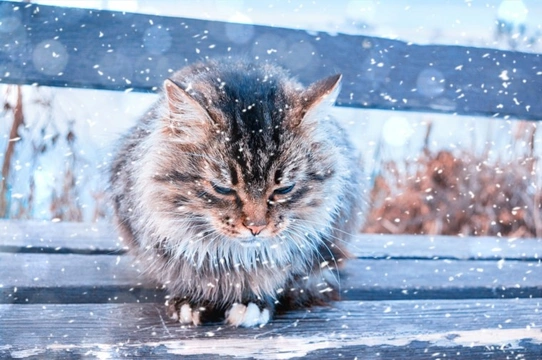
Five seasonal implications autumn can have on your cat’s health and wellness
The cooler autumn weather and shorter days tends to have an impact on all of us to an extent, and the changing of the seasons also causes changes in our cats. Coupled with the natural behavioural changes that the cooler weather brings, autumn and the lead-in to winter has other implications for cat health and wellness, and brings some hazards with it along with those darker nights.
This article will tell you more about five seasonal implications that autumn can have on the health and wellness of cats, and the care considerations that come with them.
Read on to learn more about autumn cat care and safety.
Cooler weather can cause flare-ups of arthritis in older cats
First-time diagnoses of arthritis in cats occur more commonly in autumn and winter than at other times of the year, as cooler weather can have an acute impact on joint conditions such as these and mean that such conditions become symptomatic for the first time when the weather starts to cool off.
If you notice that your cat appears stiff, has problems getting up and down, is less mobile than normal, or appears to be in discomfort or even just a little quiet for no good reason, this is something to bear in mind. Cats are very good at masking pain, so by the time you spot something that seems a bit unusual or feel that your cat appears to be becoming less mobile, the situation has probably been in the making for some time already.
Keep an eye on your cat’s mobility and general comfort as the weather gets cooler, and get them checked out by your vet if you think they might be developing arthritis or another joint disorder.
Be alert to the risks of antifreeze poisoning
Antifreeze is highly toxic to dogs and cats, and unlike most other serious toxins it also has a palatable taste, which means that how you store and use antifreeze for your car or other things should be undertaken with safety in mind.
Antifreeze is also sometimes used as part of road gritting and clearing paths in icy weather, so take care if you use such products on your own paths or driveway and pick one that doesn’t have a chemical element to it to ensure that it is safe for your cat.
Take care when you start your car; cats sometimes seek out engine warmth
The engine block of your car is very warm after a journey of any length, and under the bonnet of your car provides shelter from the elements too.
Cats will quite commonly climb under cars and into the space around the engine if they’re cold to keep warm for a while, but this of course spells disaster if someone then starts the car while a cat is still in situ.
Generally, the movement and sound of someone getting into a car will suffice to cause any cat that’s taking a nap there to move on, but it is wise to get into the habit of knocking sharply on the bonnet before you get in, and waiting a few seconds just to make sure there isn’t a cat on their way out before you start the engine.
Your cat might eat more and exercise less
As the weather gets cooler, cats tend to eat more and go out or exercise less to preserve body weight for the winter to come. This is an evolutionary trait to help them to survive the colder months of the year, which still manifests today in our domestic cats, despite the fact that this is far less of a problem for them in reality!
Don’t be surprised then if you find yourself filling your cat’s food bowl up more often in the winter, and they are also likely to gain a little winter weight, which they will then usually lose over the spring when they become more active once more.
Fireworks on bonfire night and over Christmas and New Year can be very distressing for cats
Finally, bonfire night rarely means one night of fireworks, and bonfire night, Halloween, and then Christmas and New Year all tend to mean that fireworks might be let off without warning all over the country.
Cats tend to find this frightening and distressing, and so it is best to keep them inside on nights when you know this is likely to happen, and provide them with a hidey hole to wait things out in to help them to feel safe and secure.
Close windows and curtains too, and play some music to lessen the impact of the noise from outside. Also, be really careful if you need to open your front door to make sure that a cat who is scared of fireworks doesn’t bolt off and get lost.



